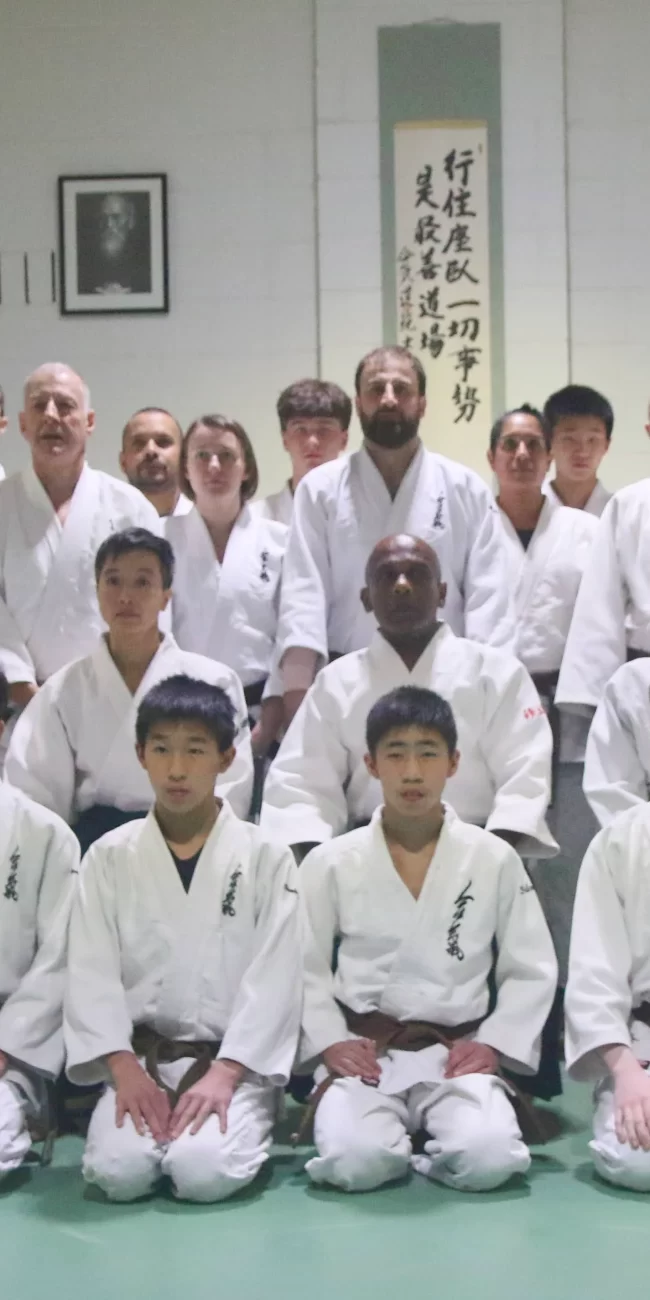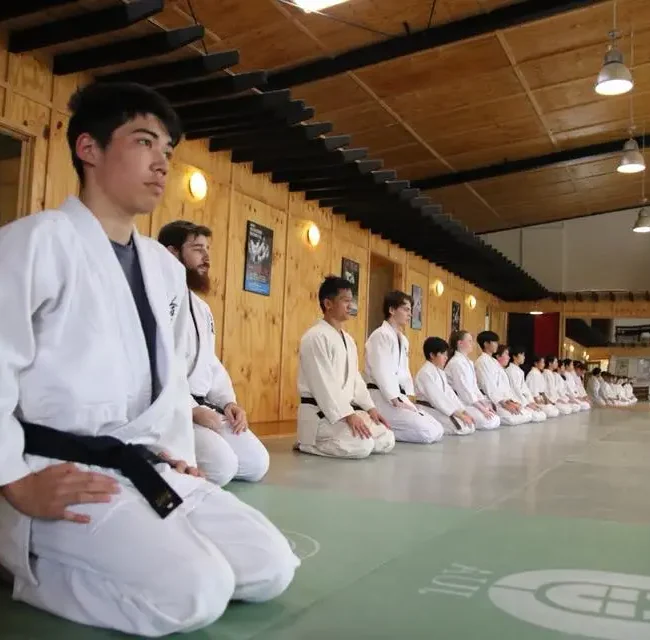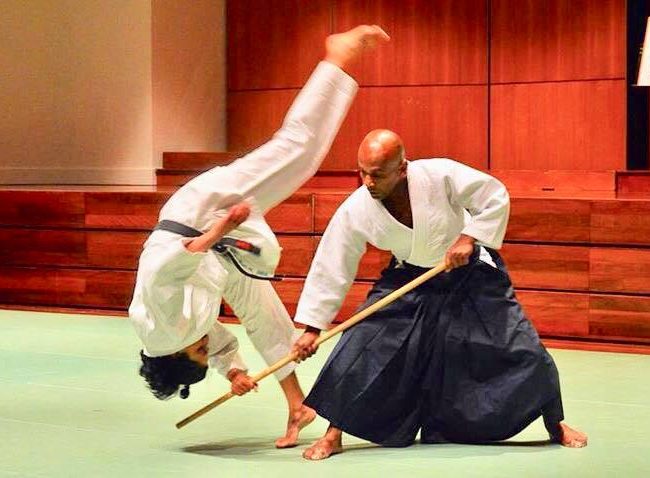
Aikido, the art of flow, is a martial art that focuses on blending with an opponent’s energy and redirecting it rather than using brute force. It is a discipline that teaches self-defense techniques, cultivates mental and physical balance, and promotes personal growth. In this article, we will delve into the fascinating world of Aikido, exploring its principles, techniques, and benefits.
The Origins of Aikido
Aikido was developed in Japan by Morihei Ueshiba, in the early 20th century. Inspired by his study of various martial arts, including Jujutsu and Kenjutsu, Ueshiba sought to create a system that would emphasize harmony and spiritual growth. He blended these influences with his own philosophies, resulting in the birth of Aikido.
The Philosophy of Aikido
At the core of Aikido lies the philosophy of harmony and non-resistance. The practitioners of this art strive to blend with an opponent’s energy rather than meeting it with force. Aikido techniques involve circular movements, flowing footwork, and precise joint locks to redirect and neutralize attacks. By cultivating a mindset of harmony and non-aggression, Aikido practitioners aim to resolve conflicts peacefully.
The Principles of Aikido
Aikido is guided by several fundamental principles that underpin its techniques and philosophy. Understanding these principles is essential for mastering the art of flow. Let’s explore some of the key principles of Aikido:
- Irimi (Entering)
In Aikido, the principle of irimi involves entering into an opponent’s space and blending with their energy. By moving forward with controlled assertiveness, practitioners can effectively neutralize an attack and establish a position of advantage. Irimi allows for the redirection of an opponent’s momentum and sets the foundation for subsequent techniques.
- Atemi
Atemi refers to striking or attacking vital points on the opponent’s body. In Aikido, atemi serves as a means to disrupt an opponent’s balance, distract them, or create openings for further techniques. By utilizing precise and well-timed strikes, practitioners can control the flow of a confrontation and gain control over the situation.
- Kokyu-ho (Breathing Control)
The principle of kokyu-ho emphasizes the importance of proper breathing and breath control in Aikido. By maintaining a relaxed and deep breathing pattern, practitioners enhance their stability, focus, and connection with their own energy and that of their opponent. Kokyu-ho facilitates the execution of techniques with fluidity and grace.
- Sankaku-ho (Triangular Principle)
Sankaku-ho, also known as the triangular principle, is a fundamental concept in Aikido. It involves positioning oneself and the opponent in a triangular relationship with a third point of reference. By creating this triangular structure, practitioners can effectively control an opponent’s balance and leverage their own body positioning to execute techniques.
- Tenkan (Turning)
The principle of tenkan emphasizes the use of turning movements to redirect an opponent’s attack momentum. By pivoting and turning, practitioners can avoid direct confrontation and reposition themselves to gain a tactical advantage. Tenkan allows for the efficient blending and redirection of an opponent’s energy, setting the stage for further techniques.
Techniques in Aikido
Aikido encompasses a wide range of techniques that leverage an opponent’s energy and movements. These techniques can be categorized into throws, joint locks, and pins. Let’s explore some of the key techniques used in Aikido:
1. Ikkyo (First Technique)
Ikkyo is a fundamental Aikido technique that involves controlling an opponent’s arm and wrist while applying pressure to a specific point on the wrist. This technique allows practitioners to redirect the opponent’s energy and maintain control over the situation.
2. Nikyo (Second Technique)
Nikyo focuses on applying a joint lock to an opponent’s wrist, thereby immobilizing them. By manipulating the wrist joint, Aikido practitioners can control the opponent’s movements and neutralize their attack.
3. Sankyo (Third Technique)
Sankyo involves a twisting motion applied to the opponent’s wrist, which creates pain and off-balances them. This technique can be used to subdue an opponent while maintaining control and minimizing harm.
4. Shihonage (Four-Direction Throw)
Shihonage is a powerful throwing technique that involves taking hold of an opponent’s wrist and leading them into a circular motion, ultimately throwing them to the ground. This technique utilizes the principles of blending and circular movement.
5. Kokyunage (Breath Throw)
Kokyunage focuses on utilizing an opponent’s breath and momentum to execute a throw. By harmonizing with an opponent’s energy and timing, Aikido practitioners can redirect their movements and create an opportunity for a controlled throw.
Benefits of Learning Aikido
Aikido offers a multitude of benefits for those who dedicate themselves to its practice. Here are some of the key advantages that come with learning Aikido:
- Physical Fitness: Aikido training involves dynamic movements that improve flexibility, strength, and overall fitness. Regular practice can enhance cardiovascular health, endurance, and coordination.
- Self-Defense Skills: Aikido techniques are highly effective for self-defense situations. By learning how to blend with an opponent’s energy and redirect their attacks, practitioners can defend themselves while minimizing harm to both parties.
- Stress Reduction: The philosophy and techniques of Aikido promote relaxation, mindfulness, and inner peace. Engaging in Aikido training can help reduce stress, increase mental clarity, and improve overall well-being.
- Conflict Resolution: Aikido’s emphasis on non-resistance and harmony extends beyond physical confrontations. The principles of Aikido can be applied to everyday life, enhancing interpersonal relationships and facilitating peaceful conflict resolution.
- Self-Development: Aikido is not just a martial art; it is a path of personal growth. Through dedicated practice, practitioners can cultivate discipline, focus, patience, and resilience, fostering holistic self-development.
Conclusion
Aikido, the art of flow, offers a unique approach to self-defense and personal growth. By blending with an opponent’s energy, redirecting attacks, and emphasizing harmony, Aikido practitioners can achieve a sense of flow both on and off the mat. The physical and mental benefits of learning Aikido extend beyond self-defense, promoting overall well-being and fostering a deeper understanding of oneself and others. Embark on the journey of Aikido, and discover the art of flow today.





